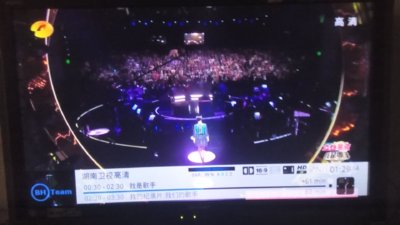- Home
- Forums
- Black Hole (Archive)
- Blackole Support (Discontinued)
- Vu+ HD Receiver Black Hole Images
- Vu+ Duo2 Black Hole Images
You are using an out of date browser. It may not display this or other websites correctly.
You should upgrade or use an alternative browser.
You should upgrade or use an alternative browser.
About Chinese language support
- Thread starter lhuhb
- Start date
nunigaia
Moderator
I use my Vu+ duo2 in China.But black hole image does not support Chinese language. The EPG shows uncongnized characters. How to solve this problem?Thanks.
I´ve maked a search and
try this:
It doesnt matter what image you use as it's a modification you need to make in your GUI
Step 1. Telnet in and init 4
Step 2. ftp in to /usr/share/fonts/
add a JAPANESE font (be carefull some font will cause a crash) I use togoshi-monago.ttf
Step 3. ftp in to /usr/share/enigma2/
now if you are using a default skin you need to edit skin.xml
If you are using a non default skin you need the skin.xml file in the folder of the skin you are using.
Once you have opened skin.xml scroll down to fonts paragraph
<fonts>
<!-- <font filename="md_khmurabi_10.ttf" name="Regular" scale="90" /> -->
<font filename="nmsbd.ttf" name="Regular" scale="90" />
<font filename="lcd.ttf" name="LCD" scale="100" />
<font filename="togoshi-monago.ttf" name="Replacement" scale="90" replacement="1" />
<font filename="tuxtxt.ttf" name="Console" scale="100" />
</fonts>
You need to replace the name of the font which = replacement with the name of the japanese font you placed in to the fonts folder
Step 4. Telnet init 3
That then should allow you to see Japanese texts.
NOTE: You can adapt this minimal guide to chinese fonts
best regards
nunigaia
Many thanks! So happy to see that.I will try it today.
I´ve maked a search and
try this:
It doesnt matter what image you use as it's a modification you need to make in your GUI
Step 1. Telnet in and init 4
Step 2. ftp in to /usr/share/fonts/
add a JAPANESE font (be carefull some font will cause a crash) I use togoshi-monago.ttf
Step 3. ftp in to /usr/share/enigma2/
now if you are using a default skin you need to edit skin.xml
If you are using a non default skin you need the skin.xml file in the folder of the skin you are using.
Once you have opened skin.xml scroll down to fonts paragraph
<fonts>
<!-- <font filename="md_khmurabi_10.ttf" name="Regular" scale="90" /> -->
<font filename="nmsbd.ttf" name="Regular" scale="90" />
<font filename="lcd.ttf" name="LCD" scale="100" />
<font filename="togoshi-monago.ttf" name="Replacement" scale="90" replacement="1" />
<font filename="tuxtxt.ttf" name="Console" scale="100" />
</fonts>
You need to replace the name of the font which = replacement with the name of the japanese font you placed in to the fonts folder
Step 4. Telnet init 3
That then should allow you to see Japanese texts.
NOTE: You can adapt this minimal guide to chinese fonts
best regards
nunigaia
I tried this method,but it does not works with my Duo2. And I alaso tried to use with other IMAGES such as openATV and Vu+ Official IMAGE.
Any other solutions or did I do something not correctly?
1. I used a Chinese font also named 'ae_AlMateen.ttf'(5057KB) which works in a Chinese openPLI IMAGE.
2. Fonts part of the skin_default.xml file is below:
<fonts>
<font filename="nmsbd.ttf" name="Regular" scale="90" />
<font filename="andale.ttf" name="Fixed" scale="100" />
<font filename="tuxtxt.ttf" name="Console" scale="100" />
<!-- Arabic and Thai char set replacement -->
<font filename="ae_AlMateen.ttf" name="Replacement" scale="100" replacement="1" />
<!-- Aliases that should be present -->
<alias name="Body" font="Regular" size="20" height="25" />
<alias name="ChoiceList" font="Regular" size="20" height="25" />
<alias name="TextNormal" font="Regular" size="20" height="24" />
</fonts>
The screen capture is blow:
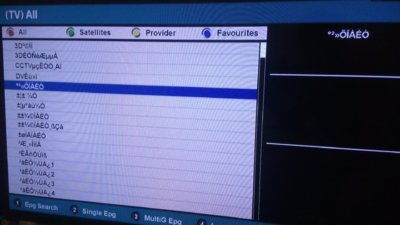
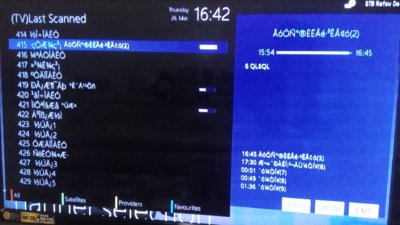
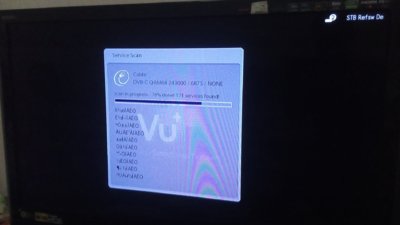
Any other solutions or did I do something not correctly?
1. I used a Chinese font also named 'ae_AlMateen.ttf'(5057KB) which works in a Chinese openPLI IMAGE.
2. Fonts part of the skin_default.xml file is below:
<fonts>
<font filename="nmsbd.ttf" name="Regular" scale="90" />
<font filename="andale.ttf" name="Fixed" scale="100" />
<font filename="tuxtxt.ttf" name="Console" scale="100" />
<!-- Arabic and Thai char set replacement -->
<font filename="ae_AlMateen.ttf" name="Replacement" scale="100" replacement="1" />
<!-- Aliases that should be present -->
<alias name="Body" font="Regular" size="20" height="25" />
<alias name="ChoiceList" font="Regular" size="20" height="25" />
<alias name="TextNormal" font="Regular" size="20" height="24" />
</fonts>
The screen capture is blow:



After tried all can find methods, there is a temporary solution.
1. Replace libdvbsi++.so.1.0.0 with attached file which is recompiled to encoding Chinese language correctly.
2. Modify the skin.xml or corresponding skin file fonts with a Chinese fonts.
3. Restart.
1. Replace libdvbsi++.so.1.0.0 with attached file which is recompiled to encoding Chinese language correctly.
2. Modify the skin.xml or corresponding skin file fonts with a Chinese fonts.
3. Restart.
Attachments
After tried all can find methods, there is a temporary solution.
1. Replace libdvbsi++.so.1.0.0 with attached file which is recompiled to encoding Chinese language correctly.
2. Modify the skin.xml or corresponding skin file fonts with a Chinese fonts.
3. Restart.
I use my Vu+ duo2 in China.
I tried this method,but it does not works with my Duo2.
How to solve this problem?Thanks.

Replace libdvbsi++.so.1.0.0 、Modify the skin.xml:
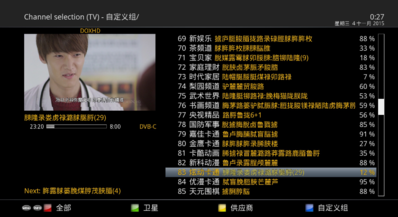
Last edited:
I tried this method,but it does not works with my Duo2. And I alaso tried to
View attachment 19240 View attachment 19241 View attachment 19242
Hello, for me the font part works well for the tv channels names , but not for EPG, when i replace the
libdvbsi++.so.1.0.rar the booting hangs. I have vu+ ultimo 4k with blackhole 3.0.4.
(original i renamed) all permissions on both files are the same.
any suggestions or new version of the file,
much appreciated.
bogdanm
Moderator
Why you can replace? You hve problem only with EPG ?Hello, for me the font part works well for the tv channels names , but not for EPG, when i replace the
libdvbsi++.so.1.0.rar the booting hangs. I have vu+ ultimo 4k with blackhole 3.0.4.
(original i renamed) all permissions on both files are the same.
any suggestions or new version of the file,
much appreciated.
Whot orginal skin from Bh you try on your box ?
You have any crashlog ?
Thank you for reply
I have replace as per according above instruction.
In epg i get meaningless garbage, it wont display Chinese characters properly (at all).
I have original BH sking.
It does not crash just hangs, no logs. when hangs there is no enigma2 process registered in ps -A.
I have adjusted the skin.xml accordingly and place the font in right place, the channels are displayed correctly with the right font and meaning.
when I replaced the enclosed file in /usr/lib/libdvbsi++.so.1.0.0
the vu++ boots up to the point "loading gui" and never passes that point.
when i put back the original it works again.
P.S.
I tried with OpenPLI, it has different approach in the enigma2 skin configuration, it let configure fall back on codepage if not provided by sender, nevertheless i could not make to work, no instruction on configuration. Limited functionality
I have replace as per according above instruction.
In epg i get meaningless garbage, it wont display Chinese characters properly (at all).
I have original BH sking.
It does not crash just hangs, no logs. when hangs there is no enigma2 process registered in ps -A.
I have adjusted the skin.xml accordingly and place the font in right place, the channels are displayed correctly with the right font and meaning.
when I replaced the enclosed file in /usr/lib/libdvbsi++.so.1.0.0
the vu++ boots up to the point "loading gui" and never passes that point.
when i put back the original it works again.
P.S.
I tried with OpenPLI, it has different approach in the enigma2 skin configuration, it let configure fall back on codepage if not provided by sender, nevertheless i could not make to work, no instruction on configuration. Limited functionality


